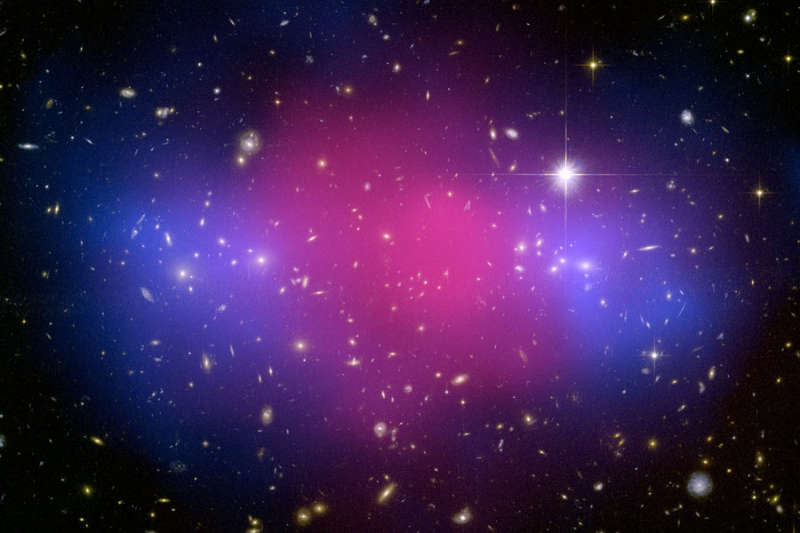MACSJ0025: Two Giant Galaxy Clusters
Collide

Explanation:
What happens when two of the largest objects in the universe collide?
No one was quite sure, but the answer is giving clues to the nature of
mysterious
dark matter.
In the case of
MACSJ0025.4-1222, two huge
clusters of
galaxies have been found slowly
colliding over hundreds of millions of years,
and the result has been imaged by both the
Hubble Space Telescope in
visible
light and the
Chandra Space Telescope in
X-ray light.
Once the above visible image was recorded, the location and
gravitational lens distortions
of more distant galaxies by the newly combined galaxy cluster
allowed astronomers to computationally determine what
happened to the clusters'
dark matter.
The result indicates that this huge collision has caused the dark matter
in the clusters to become partly separated from the normal matter,
confirming
earlier speculation.
In the
above
combined image, dark matter is shown as the diffuse purple hue, while
a smoothed depiction of the X-ray hot
normal matter
is shown in pink.
MACSJ0025 contains hundreds of galaxies, spans about three million
light years, and lies nearly six billion light years away
(
redshift 0.59) toward the constellation of Monster Whale
(
Cetus).
Note: Free
Astronomy Course Taught Online by an APOD Editor
Authors & editors:
Robert Nemiroff
(MTU) &
Jerry Bonnell
(USRA)
NASA Web Site Statements, Warnings,
and Disclaimers
NASA Official: Jay Norris.
Specific
rights apply.
A service of:
LHEA at
NASA /
GSFC
& Michigan Tech. U.

